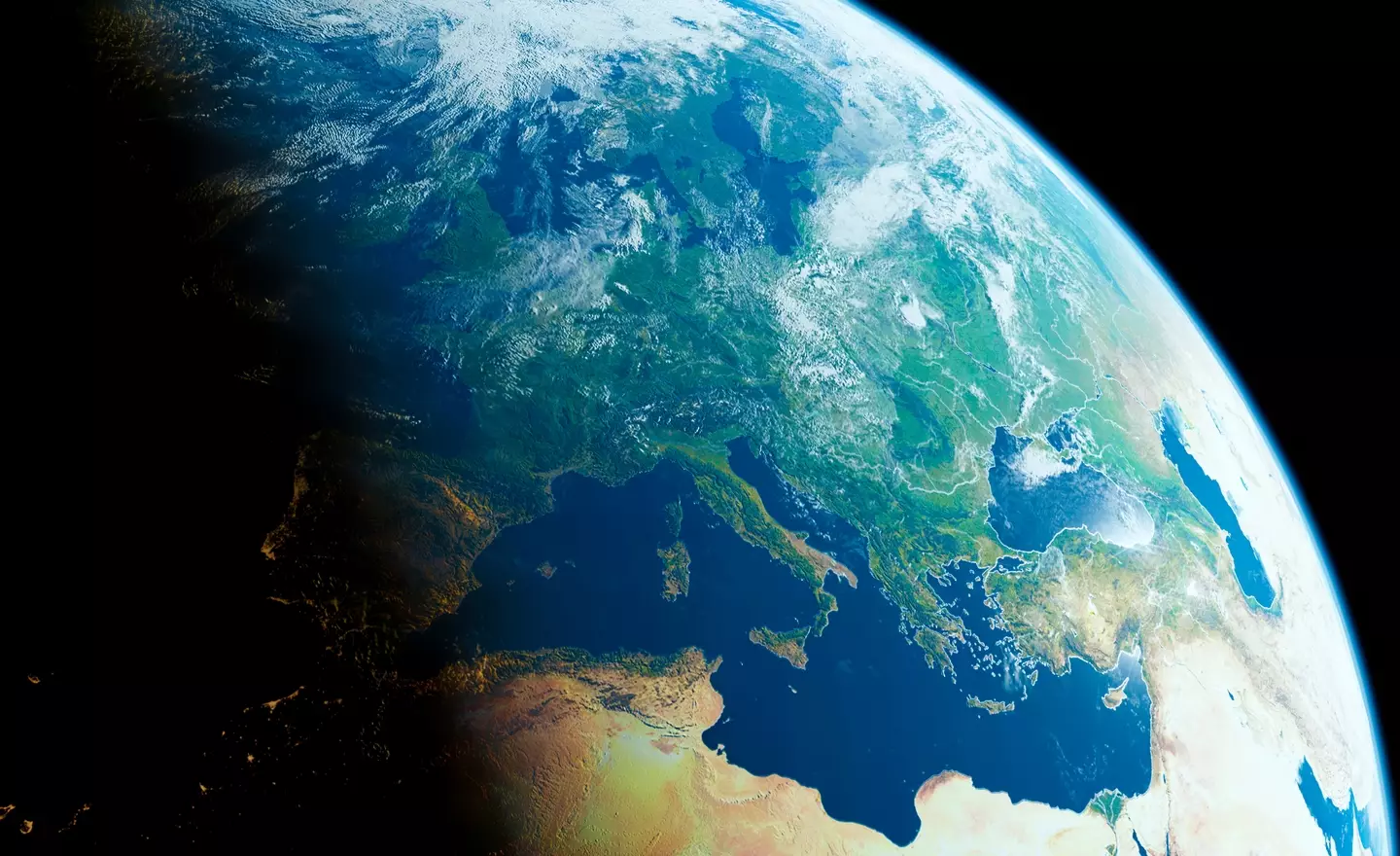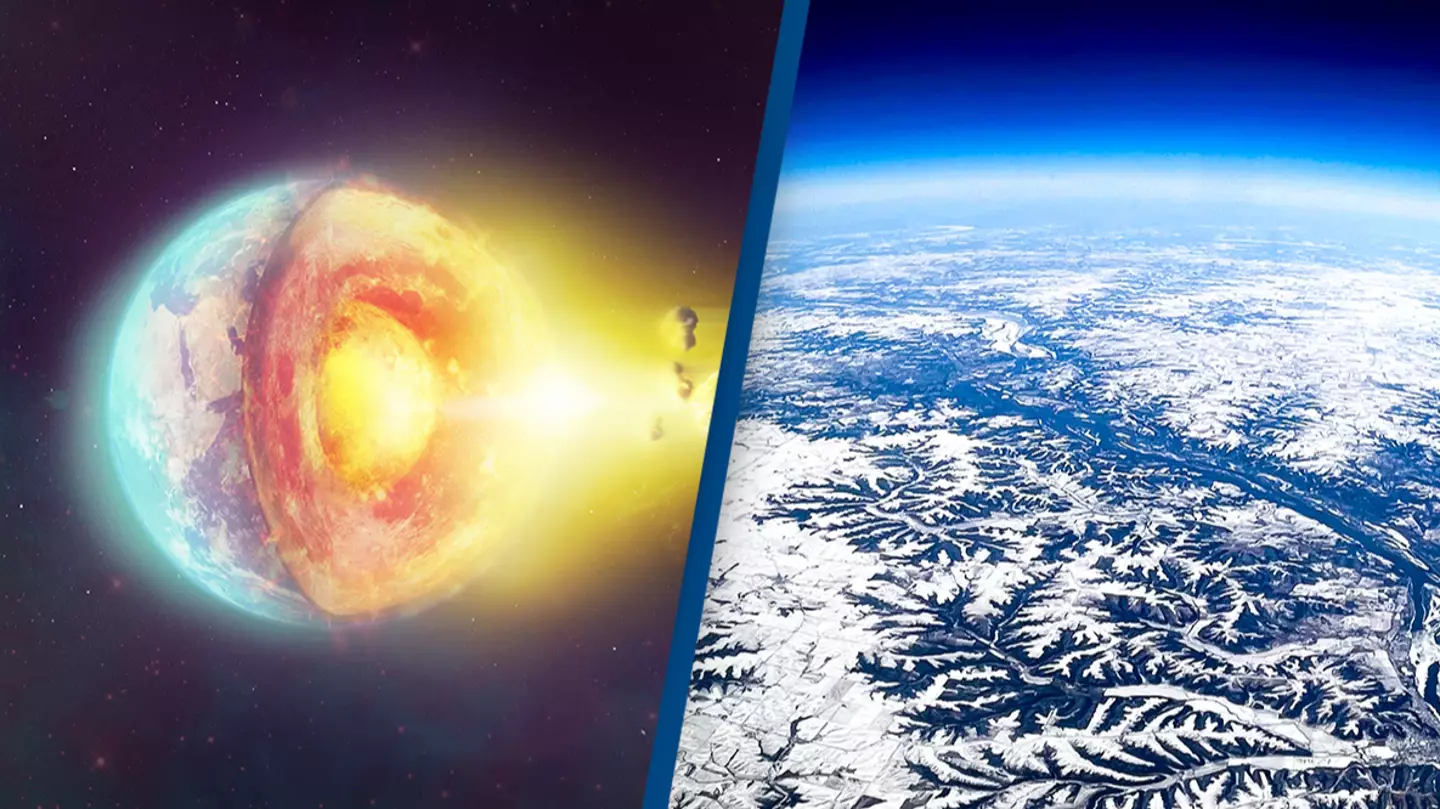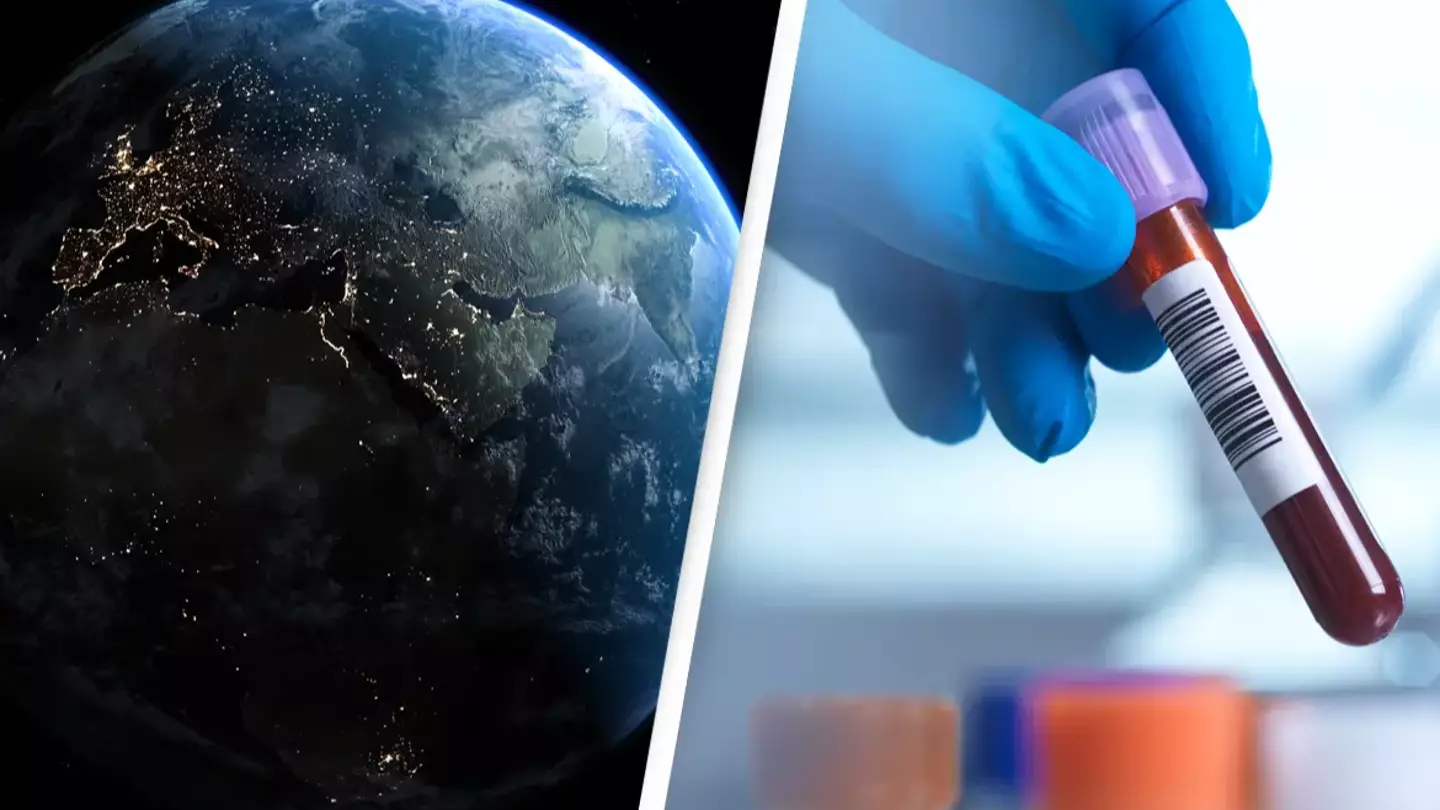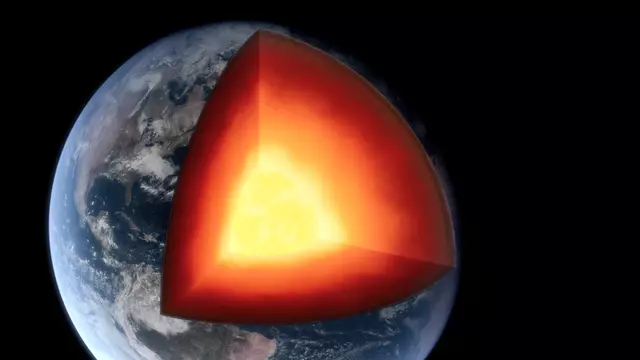Scientists believe that precious metals like gold are leaking from the Earth’s core.
The world’s largest gold reserve sits inside the Earth‘s metallic core and, with this being located beneath 3,000 km of solid rock, it’s impossible for us to get our hands on it.
But nature appears to be doing the hard work for us and has slowly been transferring some metals to the Earth’s surface from the core, as per a new study conducted by Göttingen University in Germany.
Dr Nils Messling of the university’s Department of Geochemistry said of their findings: “When the first results came in, we realised that we had literally struck gold! Our data confirmed that material from the core, including gold and other precious metals, is leaking into the Earth’s mantle above.”


Hawaii was at the center of the study (Getty Stock Image)
But how did they come to this discovery, I hear you ask? Well, researchers conducted a three-year analysis of Hawaii’s basaltic rocks, which were first created by molten rock rising from the ocean floor, CNN explains.
Heavy metals were later found in these rocks, creating the suspicion that the core was leaking metals such as gold. The metals appear to be bleeding out from the core, which then travels to the mantle and eventually makes its way to the crust.
Dr Messling said of this: “About 40 years ago, people first came up with the theory that maybe the core is losing some material into the mantle, but the signals we got so far were really ambiguous. Now, in my opinion, we have the first very strong evidence that some of the core is actually ending up in the mantle.”


Scientists believe precious metals from the Earth’s core can travel to the mantle (Getty Stock Image)
To come to this realization, scientists looked at a particular Ru isotope: Ruthenium-100 (100Ru). Per the university, the Earth’s core has a higher abundance of this isotope compared to our planet’s rocky mantel (which sits between Earth’s outer crust and the molten core).
“The mantle has almost no ruthenium in it,” explained Dr Messling. “It’s one of the rarest elements on Earth. But Earth is basically made of meteorites that crashed together, and meteorites (contain) ruthenium, which went into the core when the core formed. So the mantle has next to no ruthenium, and the core has all of the ruthenium. The same with gold and platinum.”
To determine if the Ruthenium was from the core or mantle, the team looked for 100Ru specifically — a silvery-white metal that is similar in appearance to platinum.


Over 99 per cent of Earth’s gold lies in the core (Getty Stock Image)
As they found that the Hawaiian rocks had more 100Ru in them than they should, the researchers believe that the rocks were partially formed from materials that traveled to the surface from the Earth’s core.
Co-author of the paper, Matthias Willbold, said of this: “Our findings not only show that the Earth’s core is not as isolated as previously assumed.
“We can now also prove that huge volumes of super-heated mantle material – several hundreds of quadrillion metric tonnes of rock – originate at the core-mantle boundary and rise to the Earth’s surface to form ocean islands like Hawaii.”
Featured Image Credit: Getty Stock Images


Humans backtrack all the time; attempting to get out of plans, promises or comments taken the wrong way, and now it seems the Earth itself is following our lead.
According to a study from the University of Southern California, researchers have found evidence that the Earth’s inner core is ‘backtracking’ – and it’s been doing so for some time.
Since the Earth’s inner core is hidden 3,000 miles under our feet, it can’t be studied in person, meaning scientists typically have to analyze renderings of the inner core’s movement created using the seismic waves of earthquakes.
In this particular study, researchers looked at seismic data recorded around the South Sandwich Islands from 121 repeating earthquakes – earthquakes that occur at the same location – which occurred between 1991 and 2023, along with data from a number of nuclear tests.
The topic of movement of the inner core is one which has been debated by the scientific community for two decades, but the findings of the USC study determined that the core has, in fact, slowed down.


The Earth’s core is hidden beneath our feet. (Getty Stock Photo)
John Vidale, Dean’s Professor of Earth Sciences at the USC Dornsife College of Letters, Arts and Sciences, commented: “When I first saw the seismograms that hinted at this change, I was stumped. But when we found two dozen more observations signaling the same pattern, the result was inescapable.”
The research revealed that the inner core began to decrease its speed around 2010, and is considered now to be reversing in relation to the planet’s surface.
For the first time in approximately 40 years, the inner core is moving slightly slower, instead of faster, than the Earth’s mantle.


More research is needed to learn why the core is slowing. (Getty Stock Photo)
“The inner core had slowed down for the first time in many decades,” Vidale said. “Other scientists have recently argued for similar and different models, but our latest study provides the most convincing resolution.”
Though the inner core isn’t something we can see, the changes it’s experiencing could impact time itself – although we probably won’t notice it.
Vidale explained: “It’s very hard to notice, on the order of a thousandth of a second, almost lost in the noise of the churning oceans and atmosphere.”
Following the initial research, the USC scientists hope to chart the trajectory of the inner core in even greater detail with goals to figure out exactly why it’s changing.
“The dance of the inner core might be even more lively than we know so far,” Vidale concluded.
Featured Image Credit: Getty Stock
Topics: Earth, Science, World News


A terrifying simulation has shown exactly what would happen if the Earth’s core drastically dropped in temperature.
While it’s unlikely to occur in our lifetimes, the centre of our planet cooling down would spell big trouble.
As kids, most of us were convinced we could dig to the center of the Earth, some 4,000 miles (6,400 kilometers) beneath us.
But it’s a good job we can’t, as the core is raging away at 10,832 degrees Farenheit (about 6,000 degrees Celsius).
And the feat would take a good while to complete; scientists in Russia spent 19 years digging the deepest manmade hole in existence in the 80s.


The Earth’s core is nine percent hotter than the surface of the Sun (What If/YouTube)
The Kola Superdeep Borehole, in Murmansk Oblast, reached depths of 12,262 meters (40,230 ft) in 1989, almost two decades years after drilling began.
The project was stopped in 1995 due to a lack of funding, but also because deep down, Earth was hotter than anticipated.
Made up of two parts, the liquid outer core and solid inner core, the Earth’s core is roughly nine percent hotter than the surface of the Sun.
But our planet’s interior has been gradually cooling for all of its 4.5 billion-year existence.
If it cooled so much that the molten liquid center solidified, what would happen?
Fortunately, YouTube channel What If has created a simulation answering exactly that question.
Firstly, we’d lose our geomagnetic field, which is generated by the core’s two centers.
It protects us against space radiation and charged particles emitted by our Sun, so we’d be screwed without it.
Another major issue would then present itself. We’d have no atmosphere, so the Earth would start feeling a bit like Mars.
We wouldn’t be able to breathe without a pressure suit and oxygen mask.


This is how we’d all be looking when the world cools down (Flash Movie/Getty Images)
And as our core isn’t heating up water, rocks, or gas, the world would be getting colder and colder.
Volcanoes would no longer spurt lava and continents would stop drifting away from each other.
Earthquakes would no longer be a thing, which is great for people living on the ring of fire, I suppose.
Only, we’d all be dead before reaping the benefits of that one.
And if you fancied venturing to the center of the Earth, you may want to think again.
Even if it weren’t dangerously hot, the Earth’s core would still consist of 3.5 million tons of pressure, so you’d be instantly crushed to death.
There aren’t many positive outlooks for this one…
Featured Image Credit: Yuri Arcurs/Getty Images/Gregory Adams/Getty Images
Topics: Climate Change, Earth, Environment, Science, Space, YouTube


Only five percent of the ocean has been explored… and with ‘death pools’ discovered on the floor of the Red Sea, I understand why.
OK, obviously the potential that something scary lurks in the deepest darkest parts of the ocean isn’t what is preventing mankind from exploring just shy of 70 percent of the planet.
But, I’m sure it won’t help.
The deep sea holds many frightful fish like the fangtooth, gulper eel, goblin shark, vampire squid and anglerfish, but none are more terrifying than the unknown.
With those beasts you at least know what you face – OK, the vampire squid isn’t really that scary but sounds it.
Well, research is being carried out by scientists looking into the bottom of the Red Sea, which is located in the Middle East between Africa and Asia.
A research team sent divers and probes down to explore, but what they actually uncovered was ‘death pools’.


Fangtooth fish can be found at the bottom of the ocean… or at the Natural History Museum in London, where this one was on display (Dan Kitwood/Getty Images)
Just the name of them sends chills down your spine, but what are they?
Discovered at the depth of the sea inlet, part of the Indian Ocean, they are holes that go beyond the sea bed and they hold no oxygen at all and are extraordinarily salty, so most life can’t survive there.
Why is that frightening? Well, there are opportunistic predators that lurk there ready to snap up breakfast, lunch and dinner – if any bamboozled creatures happen upon them.
Professor Sam Purkis, chair of the Department of Marine Geosciences at the University of Miami, explained fish that stumble into the brine pools are ‘immediately stunned or killed’, and predators camp out near the holes to ‘feed on the unlucky’.
But it turns out the discovery of these chilling, mysterious trenches hold vital information into life on Earth as we know it.
Purkis said: “Our current understanding is that life originated on Earth in the deep sea, almost certainly in anoxic – without oxygen – conditions.


The Red Sea pictured from space (Getty stock image)
“Studying this community hence allows a glimpse into the sort of conditions where life first appeared on our planet, and might guide the search for life on other ‘water worlds’ in our solar system and beyond.”
So unearthing these pools will actually aid in space exploration.
What also offers a great insight is into ‘life before life’ is the fact that there are so few living things in these pits, meaning we have a rare window into the distant past.
He added: “Ordinarily, these animals bioturbate or churn up the seabed, disturbing the sediments that accumulate there. Not so with the brine pools. Here, any sedimentary layers that settle to the bed of the brine pool remain exquisitely intact.”
I’m sure we’re going to be hearing a lot more about these death pools, and as long as I’m not exploring myself then… bring it on nature.
Featured Image Credit: Getty stock photo/YouTube/Ocean X


Scientists believe they’ve discovered the ancestral home of humans, after years of trying to pinpoint where human life originated.
Despite all the incredible progress science has made in understanding evolution and how we came to be on the planet Earth, there’s still so much we don’t know about human life.
However, scientists in Australia have sparked debate after using DNA to provide clues about where humans originally came from.
Professor Vanessa Hayes, a geneticist at the Garvan Institute of Medical Research in Sydney, and her team analysed 1,217 samples of mitochondrial DNA, which is passed down from mother to child.
The DNA came from people living in southern Africa, with Hayes noting that ‘we have known for a long time that modern humans originated in Africa and roughly 200,000 years ago’.
Hayes explained that ‘what we hadn’t known until this study was where exactly’ humans came from.
Using the DNA, Hayes and her team traced the oldest maternal line of humans and found it pointed back to an ‘ancestral home’ that spreads from Namibia, across Botswana and into Zimbabwe.
Incredibly, the team managed to pinpoint this even further, using geological, archaeological and fossil evidence to find a body of water that would have been Africa’s largest ever lake.


There’s still so much we don’t know about human life (Getty Stock Photo)
Hayes explained: “It would have been very lush and it would have provided a suitable habitat for modern humans and wildlife to have lived.”
It’s believed that the body of water, which is located just south of the Zambezi river, could have sustained human life for 70,000 years.
Despite this, some doubt had been shed on the findings, which were published in the journal Nature.
According to The Guardian, Chris Stringer, who studies human origins at the Natural History Museum in London, commented: “I’m definitely cautious about using modern genetic distributions to infer exactly where ancestral populations were living 200,000 years ago, particularly in a continent as large and complex as Africa.
“Like so many studies that concentrate on one small bit of the genome, or one region, or one stone tool industry, or one ‘critical’ fossil, it cannot capture the full complexity of our mosaic origins, once other data are considered.”


Using the DNA, Hayes and her team traced the oldest maternal line of humans (Getty Stock Photo)
Meanwhile, Sarah Tishkoff, a geneticist at the University of Pennsylvania, added: “It is not possible to make inferences about the geographical origin of modern humans in Africa based solely on patterns of variation in modern populations. This is because humans migrate over long distances.
“They migrated out of Africa and across the globe within the past 80,000 years and they have migrated across Africa in the recent and ancient past.”




